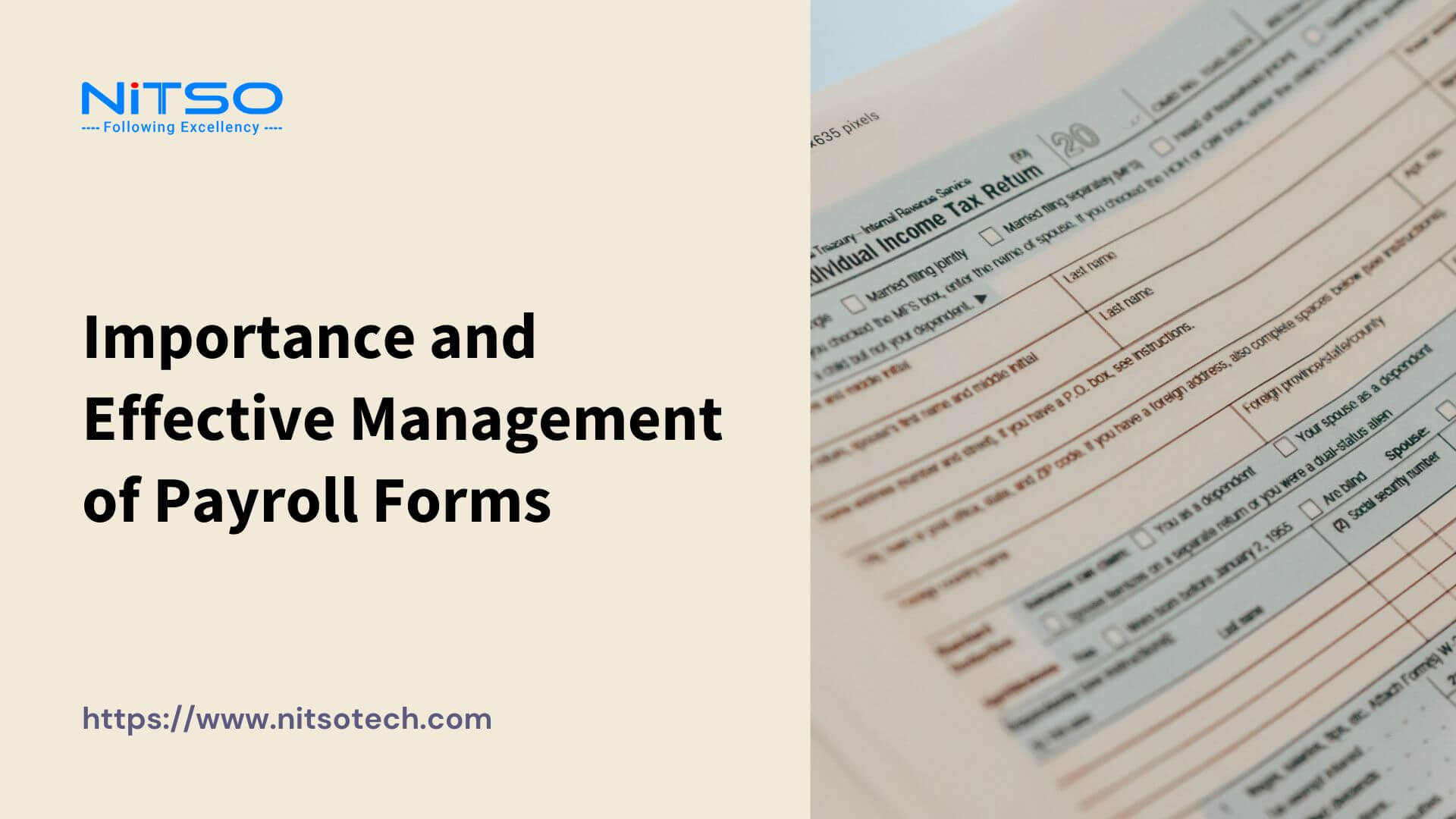Processing payroll efficiently while remaining compliant with regulations is critical for companies. India has several statutory labour and tax laws that necessitate businesses to collect extensive employee data and documentation. This is where understanding the role of payroll forms becomes essential.
Payroll forms are documents that allow the collection of employee details and other salary information needed to calculate paychecks accurately. They also aid in smooth regulatory compliance across tax deductions, statutory contributions and more. For Indian companies, a grasp of key payroll forms like Form 16, ESI forms, salary slips, etc. is vital for smooth payroll processing.
In this article, we will understand what the main types of payroll forms are, their importance for record-keeping, how to use them effectively in your business and the benefits they bring to payroll management.
Table of Contents
What Are Payroll Forms?
Payroll forms are documents used by employers to collect and report information related to employee compensation and taxes. These forms are typically filled out by employees when they are hired and then updated or submitted regularly throughout their employment.
Understanding Different Types of Payroll Forms in Detail
Some common payroll forms in India include:
1. Form 16:
Form 16, also known as the TDS Certificate, is a key tax form that every employer has to issue annually to the employees. It provides details of the total salary paid and tax deducted at source (TDS) during the financial year.
Employees require Form 16 to file their income tax returns and claim TDS credit. It is a crucial tax document that employees should diligently collect from employers every year.
2. Form 12BA:
Form 12BA needs to be submitted by employees to provide the employer details of tax-saving investments and expenses eligible for deduction under sections like 80C, 80D, etc. This includes investments in Public Provident Fund (PPF), life insurance premiums, home loan interests, health insurance premiums and more.
Employers need this form to accurately calculate the TDS liability of employees. If employees want a lower TDS deduction, Form 12BA submission is mandatory.
3. Form 10E:
Unlike other forms, Form 10E is filed by the employer, not the employee. It is used to claim tax exemption on terminal benefits like gratuity, leave encashment, etc. paid at the time of retirement or job termination of employees. The current tax exemption limit on such payments is Rs 50 lakhs as per Form 10E.
4. ESI Forms:
ESI forms are mandatory for firms with 10+ employees to register them and remit contributions towards the Employees’ State Insurance scheme.
Key forms are Form 1 for employee registration, Form 3 for employer registration and Form 5 to submit monthly contributions. Applicable for employees earning under Rs 21,000 per month.
5. PF Forms:
Provident Fund forms are required to open a PF account for employees and for remittance of monthly PF contributions. Applicable for organisations with 20+ employees and for employees earning up to Rs 15,000 per month. Employee PF forms include KYC forms, nomination forms, and transfer claim forms among others to manage the PF account.
6. Salary Slips:
Salary slips are monthly statements provided by the employer to employees showcasing the salary break-up into components like basic, HRA, allowances as well as deductions like PF, TDS etc. Salary slips are important proof of salary paid.
Overall, payroll forms are essential for ensuring accurate and timely payment of employees, as well as for complying with tax laws and regulations. Employers must keep these forms on file for a certain period of time and may be required to submit them to government agencies for audits or other purposes.
Key Elements of Payroll Forms for Accurate Record-Keeping
In this section, we will explore the key elements of payroll forms and their significance in maintaining accurate and up-to-date payroll records. Understanding these elements will not only aid in streamlining payroll processes but also ensure legal compliance and efficient management of employee data.
Some of the key elements to include in payroll forms for accurate record keeping and their explanations:
- Employee Details: Forms should collect all essential details of the employee like full name, date of birth, gender, contact information, residential address, previous employment details, bank account details for salary credit, and so on. Capturing accurate employee information is vital.
- Tax Declaration: Forms should have relevant fields and declarations by employees related to their tax liabilities – like previous employer name/TDS, investment declarations for 80C/80D deductions, rental income details etc. This affects TDS calculation.
- Statutory Contribution Details: Forms need fields to determine the applicability and remittance of statutory contributions like ESI, PF, and PT based on monthly salary. Correct statutory payment is crucial.
- Salary Structure: Details like basic salary, HRA, allowances, reimbursements, and incentive payments constitute the salary structure and impact its taxability. Forms should capture all components accurately.
- Standard Deductions: Beyond taxes, deductions like ESI, and PF also need to be incorporated in forms as applicable. This ensures automated salary calculations.
- Leaves & Attendance Data: Leave applications and attendance records help determine salaries. Forms should allow leave encashment, unpaid leaves etc. to be accounted for in payroll.
- Bank Details: To credit salary and reimbursements, bank account details – account number, IFSC code etc. are important.
Thus, well-designed payroll forms that collect all relevant employee, tax, statutory, salary and deduction data ensure payroll processing and compliance is accurate. They become reliable record-keeping tools.
Benefits of Accurately Using Payroll Forms
Accurate payroll forms are essential for any business, big or small. They provide a comprehensive and organized record of all employee payments, taxes, and deductions. While it may seem like a mundane task, accurately completing and using payroll forms can have a significant impact on a company’s operations and finances.
In this section, we will explore the various benefits that come with accurately using payroll forms, and how it can contribute to the overall success of a business.
- Compliant Salary Disbursal: Well-designed payroll forms allow the collection of all required information to calculate salaries and deductions accurately as per statutory norms. This ensures compliant salary payments to employees.
- Smooth Annual Tax Filing: Forms like Form 16 and Form 12BA help employees file their annual income tax returns smoothly. Form 16 provides TDS certificates while Form 12BA helps claim deductions to determine correct tax liability.
- Proper Statutory Contribution Remittance: Forms capturing details like ESI applicability and PF deductions facilitate correct calculation and remittance of statutory contributions. This avoids penalties.
- Updated Employee Records: Payroll forms allow for maintaining comprehensive employee records with all essential details like bank accounts, previous employment, salary and tax details etc. in an updated manner.
- Audit and Inspection Readiness: Well-maintained payroll forms act as ready reckoners during any payroll audits or inspections by authorities. They provide all requisite employee salary and deduction information.
- Payroll Reconciliation: Systematic payroll forms enable tallying of salary totals, tax deductions, statutory payments etc. This facilitates payroll reconciliation at month-end, and year-end accurately.
- Data Analysis for Decisions: Payroll forms provide structured data on salaries, benefits and deductions over time. This data can be analysed for insights to make policies and strategies.
Thus, accuracy in payroll forms ensures streamlined payroll management and aids in decision making too. It is critical for payroll teams to use forms diligently.
Tips for Effectively Using Payroll Forms in Your Business
As a business owner, you know that payroll forms are a crucial aspect of managing your employees’ salaries and taxes. However, it can be overwhelming to navigate through the various forms and requirements.
In this section, we will provide you with useful tips and strategies to help you effectively use payroll forms in your business. Whether you are a small business owner or managing a large company, these tips will help you streamline your payroll process and ensure compliance with regulations. So, let’s dive in and learn how to make the most out of payroll forms for the success of your business.
- Use Standardised Forms: Ensure your business uses standardized, well-designed payroll forms that capture all essential employee details, tax declarations, salary components etc. in a structured manner. Avoid ad-hoc forms.
- Make Submission Timely: Communicate deadlines clearly for periodic form submissions like monthly attendance or KYC forms. Timeliness ensures forms are accounted for payroll processing. Delayed forms can lead to errors.
- Verify Details: Scrutinize submitted forms thoroughly to verify details provided like bank accounts, previous employer details etc. are accurate. Promptly seek clarifications if needed.
- Ensure Compliance: Confirm payroll forms compliance with the latest regulatory requirements. Update forms regularly as per changing labour codes, tax laws etc. to avoid penalties.
- Make Forms Accessible: Use online forms, apps and tools to make forms easily fillable and accessible to employees anytime, anywhere. Simplify form-filling experience.
- Train Employees: Conduct training sessions to educate employees on the importance of forms, how to fill them correctly and timelines for submission. This improves quality.
- Audit Periodically: Keep auditing form filling, submission and payroll processing periodically to identify gaps. Analyse issues faced and refine forms and processes.
- Archive Digitally: Maintain digital archives of forms securely for easy storage, validation and retrieval when needed. Enable swift data access.
Article you might be interested in: The Complete Guide to Full Cycle Recruiting in India
Common Payroll Form Mistakes to Avoid
Processing payroll involves dealing with numerous forms for statutory and compliance requirements. However, mistakes in filling and managing forms can disrupt payroll and lead to penalties. Here are some common errors and how to avoid them:
- Incomplete Information: All fields and details in forms must be filled out completely whether it is personal details, salary breakup, previous employer details etc. Missing information can delay processing and distort calculations. Cross-check forms thoroughly.
- Illegible Handwriting: When using manual forms, unreadable handwriting can cause data entry errors. Ensure writings are legible or use digital forms. Have appropriate fields for free text to restrict writing.
- Signature Missing: Many forms require employee signature for authenticity and responsibility. Ensure signatures are present on tax declaration forms, reimbursement claims etc. Digital forms can include e-signature options.
- No Supporting Documents: Certain forms need supporting documents like identity proof, investment proofs etc. attached. Their absence makes forms ineffective. Specify a list of documents needed with every form.
- Inaccurate Information: Even if complete, any inaccurate details like incorrect bank accounts, wrong previous employer name etc. can mislead. Confirm all employee-provided data proactively.
- Outdated Form Versions: Using outdated legacy forms instead of the latest versions with additional fields or modifications can cause non-compliance. Regularly update forms in line with regulation changes.
- Delayed Submission: Adhere to form submission deadlines, else data cannot be accounted for in payroll processing. Also, payments may get delayed. Send timely reminders on due dates.
- Multiple Form Copies: A single form copy should be sufficient, as data needs to be digitized. Duplicate copies waste resources. Prefer online forms to minimize paperwork.
By avoiding such errors through due diligence in the design, usage and management of payroll forms, their full benefits can be reaped.
Key Takeaway
Handled well, payroll forms act as very useful tools that create structured employee databases, allow compliant salary calculations, provide data for decisions and keep companies audit-ready. Businesses should invest time in standardizing payroll forms specific to their needs. Equally important is training employees on timely and accurate form filling. Periodic audits also help identify areas of improvement.
Leveraging online, automated tools can further simplify form management and data availability. As regulations evolve, keeping forms updated is key. Overall, when payroll forms are meticulously maintained, they become invaluable assets for streamlining payroll processing. This allows companies to focus on more strategic priorities confidently.








0 Comments